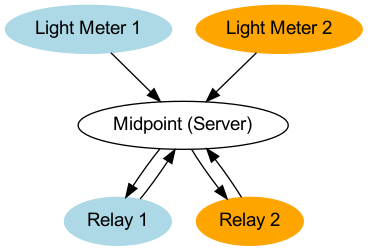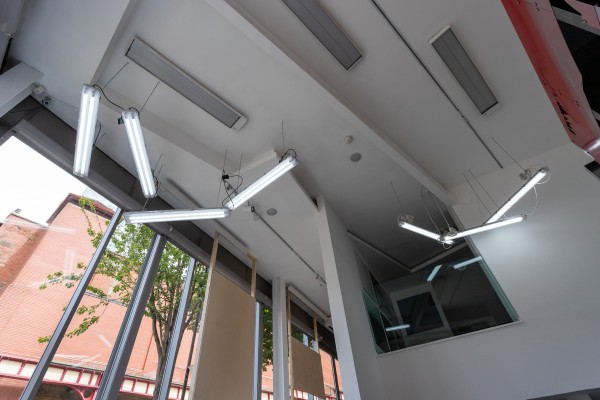Note: This project is no longer active.
Return to Ritherdon Overview
Before I describe what 'Relay' and 'Return to Ritherdon' are, I though it
would be best to give you some extra context surrounding it.
'Return to Ritherdon' was an arts-based two year residency, funded by Arts
Council England. Nicola Ellis devised the residency alongside Ritherdon &
Company Ltd. and Castlefied Gallery. Ritherdon is a manufacturer of metal
enclosures and based in Darwen, Lancashire, U.K., Castlefied is an art gallery
in Manchester, U.K. and Ellis is an artist. She is, also, based in
Manchester. Use the links below for more information on those listed above:
Note: The residency has finished and the information of this page is more for
archive purposes than anything else.
Relay
Relay is one of three smaller projects which form the 'Personal Flash in
Real-Time' series of artworks. The other two projects are 'Light Meter' and
'Midpoint'. The 'Personal Flash in Real-Time' artworks are one of numerous
artworks displayed in the 'No Gaps in the Line' (2021) exhibition, hosted in
Castlefield Gallery. For more information on the exhibition and artworks (from
the galleries perspective) and other two projects, use the following links
below:
Relay is more a device than a software program -- which deviates from my usual
stuff in this section. The aim of the Relays (devices) was to control a
selection of lights, in the gallery, based on the readings from taken with the
Light Meter devices, in the factory. If one of the staff members in Ritherdon
(factory) was welding, the corresponding Relay would turn its series of lights
on. If no-one was welding, the lights would either remain off.
 'Personal Flash in Real-Time' is one of numerous artworks produced
during the 'Return to Ritherdon' residency.
'Personal Flash in Real-Time' is one of numerous artworks produced
during the 'Return to Ritherdon' residency.
 Each Light Meter was paired to a Relay via Midpoint.
Each Light Meter was paired to a Relay via Midpoint.
I wrote the software for the Relay project in Python. One of the requirements
for the project was the inclusion of a Raspberry Pi. So, the project has only
ran on Raspberry Pi OS (formerly Raspbian) and assumes access to the Raspberry
Pi's I/O library, for its GPIO pins. On top of that, this project -- like Light
Meter -- required a bit of soldering and 3D printing. This made this project a
bit hands-on than my usual stuff.
Unfortunately, the repository this page links to includes only the software and
the 3D models (for printing). You will need to buy a Raspberry Pi and other
electronic hardware yourself if you want/need to recreate this project. To help
with this, I've created a Git repository which contains a more comprehensive
rundown of the project's spec's and requirements at the links below:
 The lights installed in the gallery, controlled by the Relay devices.
The lights installed in the gallery, controlled by the Relay devices.
Links Collection
Below is a list of all the links dotted throughout this page: